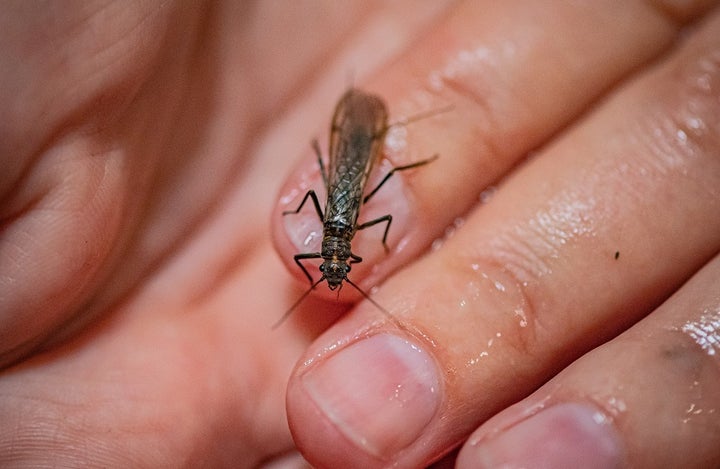
If you’re into native species revivals in the UK; firstly, I think you and I would be friends and, secondly, you’ve probably had an interesting time in the last couple of years.
While native bird species continue to decline, and native insect species fall in their masses, beavers have been reintroduced to the isle and innovation funds have been awarded to those trying to bring back the lynx and other species to Britain.
And now, a tinier bit of Lazarus-like success: the yellow Sally stonefly, which was declared extinct in the UK in 1995, has been spotted and successfully bred by Chester Zoo.
The zoo is the first to successfully breed the species in captivity throughout its entire lifecycle, initially working with just 30 critters, which were found in two areas along the River Dee.
Conservationists played a pivotal role in bringing the bugs back
Joe Chattell, an aquarist at the zoo, told Cheshire Live that “when just 30 scarce yellow Sally stoneflies arrived at the zoo, the scientific data on the species was extremely limited”.
“They were so few in number and, living for a period of just four to six weeks as adults, we really had no room for error in our efforts to save them,” he explained.
“We had to learn as much as we could, as quickly as we could, to help them back from the brink.”
They worked in partnership with Buglife Cymru, the Welsh Dee Trust, and freshwater invertebrate specialist John Davy-Bowker to revive the species from the small sample they discovered on the river.
In order to encourage reproduction, the team had to work out how to successfully mimic the natural conditions of the insect.
To do this, lighting and temperature conditions, along with more specific factors (like the oxygen levels of the river) were tweaked to perfection.
Chattell said every adjustment had been “meticulously” recorded to ensure further success.
Why should I care?
The critically-endangered species had been at risk for years before its supposed ’95 extinction.
Pollution and habitat loss – especially considering the bug needs so much clean, oxygenated water to survive – contributed to its eventual decline.
Its return has led to a four-year conservation project between the parties involved and is part of a broader trend towards rewilding Britain after enormous biodiversity loss.
“There has been a 13% decline in the average abundance of wildlife in the UK since the 1970s,” The Royal Society shared.
So, let’s all tip a hat to the little bug that could – it’s doing its teeny-tiny part.